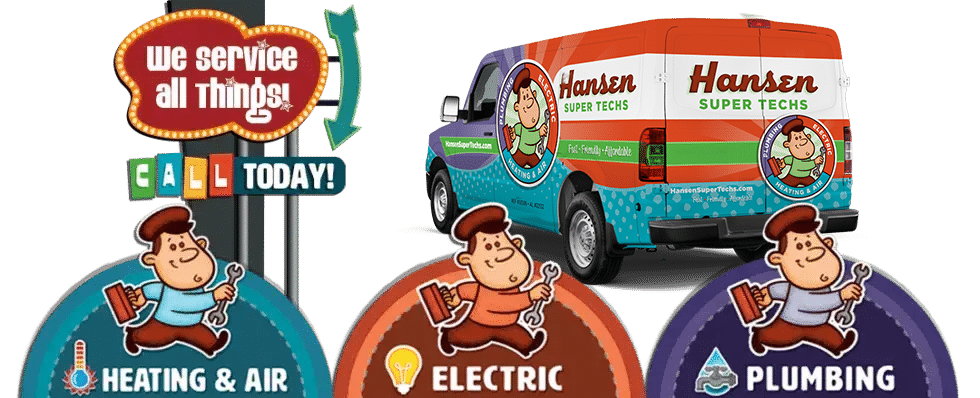Why Should You Plan for an Air Quality Test?

Indoor air pollutants cause a variety of health problems and can damage parts of the building. Since we spend most time indoors, it is always wise to address any pollution concerns. An air quality test can identify the contaminants and allergens in the building. Here are some reasons to schedule an indoor air quality test (IAQ).
Prevent Allergies and Asthma
An indoor air quality test is critical for determining the contaminants and allergens in your home. The World Health Organization states that nine out of 10 people regularly breathe polluted air. Pollution can trigger allergies and asthma symptoms.
Some of the allergens found in most homes include house dust, pet dander, pollen, and fabrics. Exposure may cause wheezing, nasal congestion, and difficulty breathing. You may experience skin rashes or eye inflammation after encountering a pollutant.
Tracking your symptoms can help you identify the pollutant. If you experience nasal congestion or difficulty breathing in the living room, you can narrow down the source to that room.
Take time to track your symptoms for about a week. Determine if the symptoms align with a specific location. You can then install an indoor air quality monitor to identify the pollutants.
Identify VOCs for Your Home’s Safety
Volatile Organic Compounds (VOCs) are chemicals produced from industrial processes. There are many different VOCs you can find in your home. Commercial products such as paint thinners, printer cartridges, adhesives, and pesticides often contain toxic compounds.
Household products can release VOCs while using them. That’s why the concentration of VOCs indoors can be up to 10 times higher than outdoors.
Exposure to VOCs can worsen asthma symptoms and cause nausea, vomiting, and breathing difficulties. Continuous exposure over several years may lead to cancer, kidney, or central nervous system complications.
Your home is at a higher risk of VOC contamination after remodeling or a construction project. Improving ventilation can reduce concentrations of VOCs in your home.
Additionally, many different household products may be releasing VOCs. An indoor air quality test can identify the precise location. Hansen Super Techs can provide indoor air quality solutions in Theodore.
Detect and Address Biological Pollutants
Besides chemical compounds, biological pollutants such as mold and mildew can impact indoor air pollution. Microbial agents thrive in humid, warm, and wet environments. They can grow on your carpet, walls, and roof siding.
While mold exposure does not affect most people, patients with immune conditions are at risk. Individuals with respiratory problems may experience symptoms ranging from mild to severe.
You can spot mold growing on surfaces by the distinct grey, brown, or green streaks. But since mold grows in warm and humid environments, it can thrive in hidden spaces. For example, plumbing leaks may trigger mold growth behind the drywall.
Mold can damage surfaces and furnishings in your home. Therefore, monitoring the air quality ensures you detect the spores as soon as they emerge. A test will confirm your suspicion, enabling you to take decisive action before it is too late.
Test for Radon Gas
Radon is an odorless, colorless, and radioactive gas that emanates from under the ground. It is the second-leading cause of lung cancer in the United States after smoking.
Radon concentration is at elevated levels in many parts of Alabama and most states in the US. The average level inside the home is 1.3 pCi/L. But it is advisable to implement control measures If the levels of Radon exceed 4 pCi/L.
The Environmental Protection Agency advises homeowners to consider addressing Radon when levels are at 2 pCi/L. You can eliminate Radon through sub-slab depressurization or suction.
You will need to perform diagnostic tests before Radon mitigation. Testing involves using a monitor to record Radon levels over time. A long-term test can generate a pattern of Radon at different times of the year.
Improve Energy Efficiency With Air Quality Testing
Measures taken to control energy efficiency can impact your home’s indoor air quality. For example, most buildings have a tight envelope to minimize energy losses. Inadequate ventilation can increase the concentration of allergens indoors.
Ventilation requirements can also vary depending on physiological and social factors. An increase in occupancy will require more airflow into the building. Activities such as cleaning, and painting can increase the concentration of pollutants.
An air quality testing device sits in the building for several days to record pollutant levels. You can use the results to balance your indoor air quality and energy efficiency needs.
Test results can define new retrofit designs to improve air quality and energy consumption. You can consult Hansen Super Techs for quality comfort solutions for your Theodore home.
Air Quality Testing Facilitates Source Control
Many factors can impact your home’s indoor air quality. Moisture, household goods, or outdoor pollution could be the source of the pollution.
You can address and eliminate all those factors. But identifying the source is the best way to prevent pollutants in your home.
Understanding the different pollutants in your home facilitates effective source control. For example, using exhaust fans can improve ventilation in the building. But for VOCs, the ventilation only dissipates VOCs when the fan is running.
The concentration of gases like VOCs and Radon can continue rising without proper source control. Radon emanates from the ground, while paints may release VOCs continuously.
Therefore, air quality testing should precede source control. The results from the test can help you understand the pollutant and how it spreads into other rooms.
Choose a Suitable Air Purification System for Your Home
Another reason to perform an air quality test is to determine the best air purification for your home. You can choose from a wide range of systems depending on the pollutants in the building. They range from equipment using activated carbon to UV lights.
A test will identify the location and quantities of contaminants in the building. If you are concerned about biological pollutants, you can use a system with UV lights. UV lights air purifiers are common in medical settings and can prevent an infection.
Some systems use activated carbon filters to absorb gases and unpleasant odors. Activated carbon works with additional filters to eliminate the tiniest microbes in the atmosphere.
The test will also determine if you should install a whole-home purifier or a point-of-use system. A point-of-use system is more cost-effective when the pollution affects only one room. But you may need multiple units running continuously to be effective.
A whole-house system is installed in the ductwork and ensures the entire building is free from pollutants. It is ideal for homes with pets and multiple occupants. A whole-house air purification appliance does not require maintenance as much as point-of-use equipment.
Consider talking to an indoor air quality specialist for the best outcomes. A professional can guide you in interpreting the results to implement the most effective air purification system.
Hansen Super Techs is a trusted AC, furnace, and indoor air quality company providing top-notch solutions in Theodore. We offer air cleaners, dehumidifiers, and reliable solutions to protect your home from pollutants and microbial agents. Our highly skilled team will diagnose your system and provide three options. We will provide accurate quotes for ductless installation or indoor air quality testing with no hidden charges. Contact our team for a 100% satisfaction guarantee.


